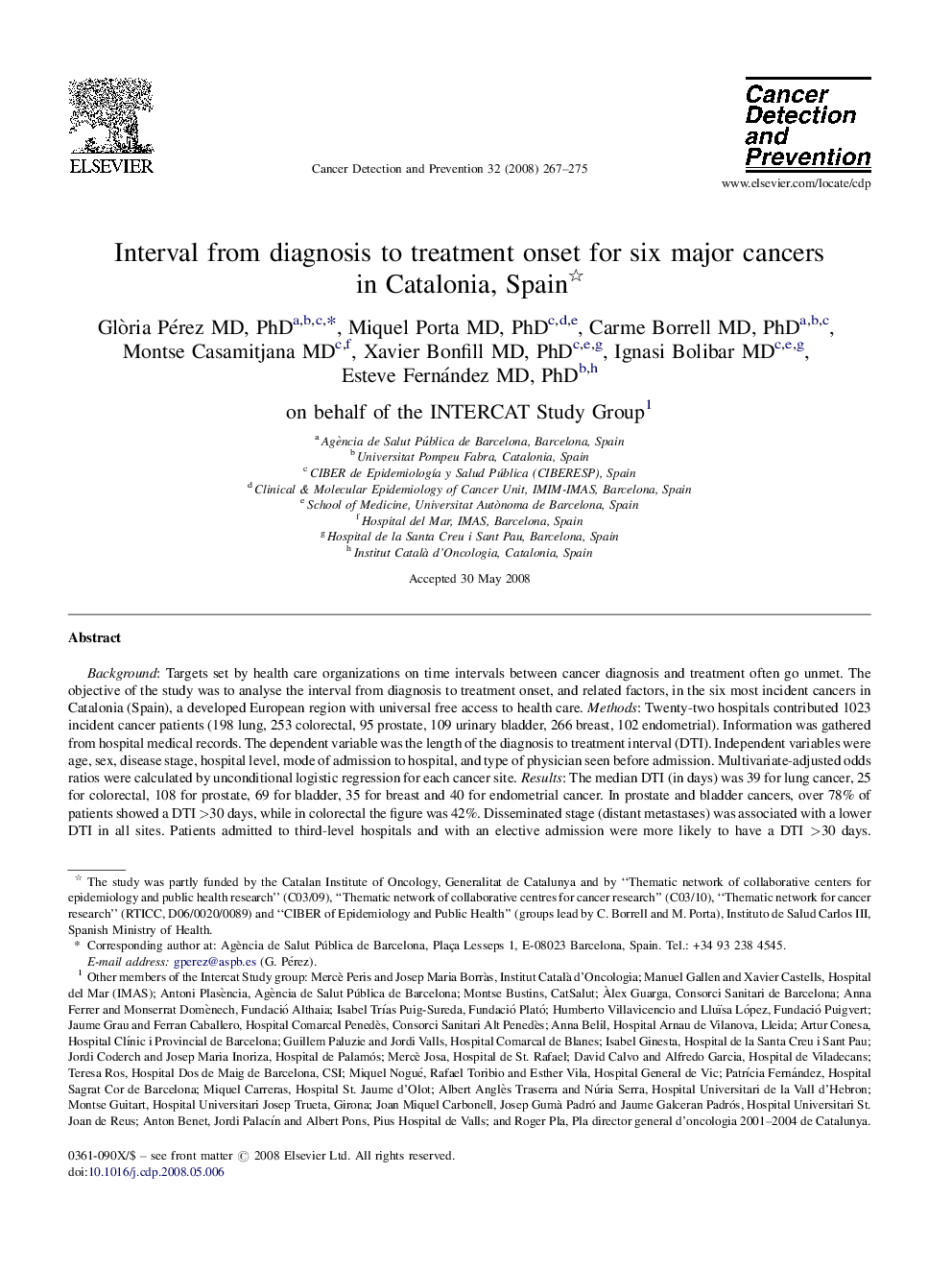| Article ID | Journal | Published Year | Pages | File Type |
|---|---|---|---|---|
| 2108515 | Cancer Detection and Prevention | 2008 | 9 Pages |
Background: Targets set by health care organizations on time intervals between cancer diagnosis and treatment often go unmet. The objective of the study was to analyse the interval from diagnosis to treatment onset, and related factors, in the six most incident cancers in Catalonia (Spain), a developed European region with universal free access to health care. Methods: Twenty-two hospitals contributed 1023 incident cancer patients (198 lung, 253 colorectal, 95 prostate, 109 urinary bladder, 266 breast, 102 endometrial). Information was gathered from hospital medical records. The dependent variable was the length of the diagnosis to treatment interval (DTI). Independent variables were age, sex, disease stage, hospital level, mode of admission to hospital, and type of physician seen before admission. Multivariate-adjusted odds ratios were calculated by unconditional logistic regression for each cancer site. Results: The median DTI (in days) was 39 for lung cancer, 25 for colorectal, 108 for prostate, 69 for bladder, 35 for breast and 40 for endometrial cancer. In prostate and bladder cancers, over 78% of patients showed a DTI >30 days, while in colorectal the figure was 42%. Disseminated stage (distant metastases) was associated with a lower DTI in all sites. Patients admitted to third-level hospitals and with an elective admission were more likely to have a DTI >30 days. Conclusions: In Catalonia, a substantial proportion of cancer patients experience treatment delays that may impact negatively on psychological well-being, quality of life, and probably survival as well.
